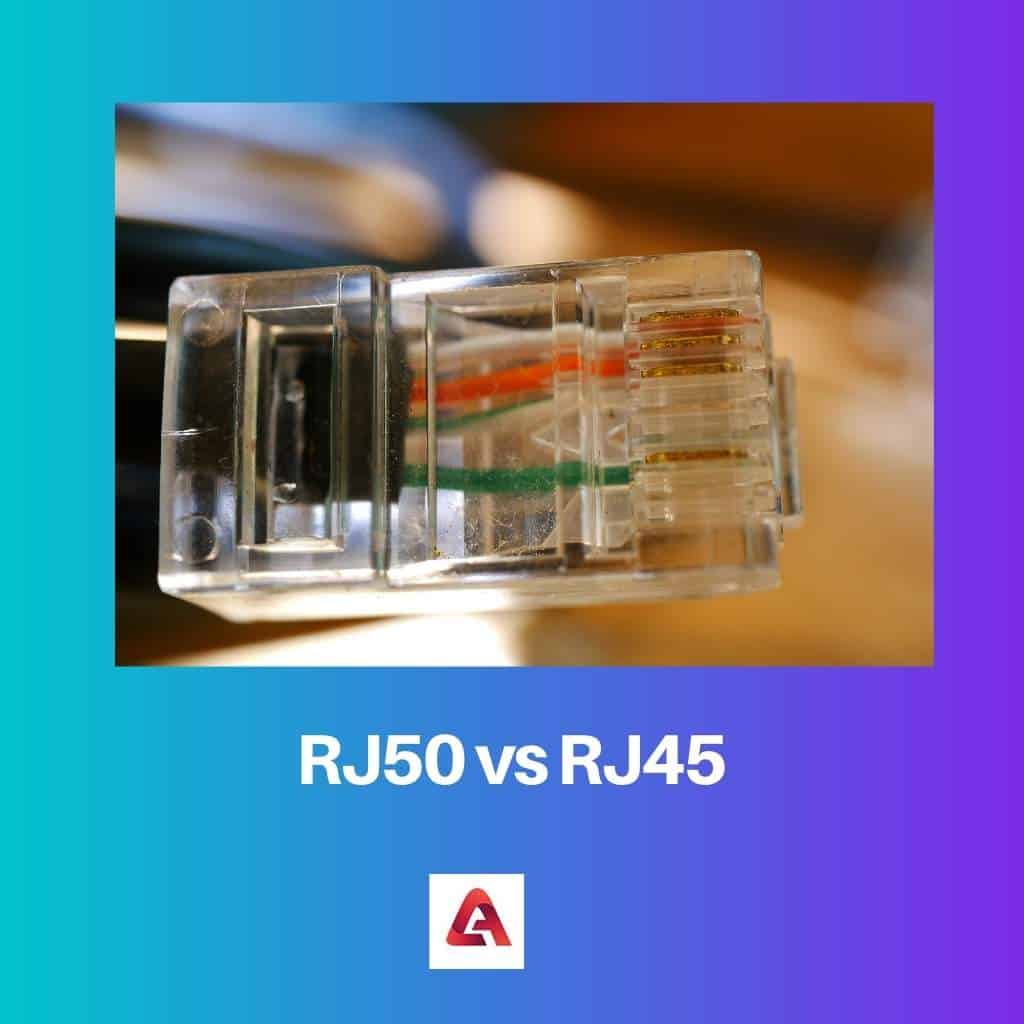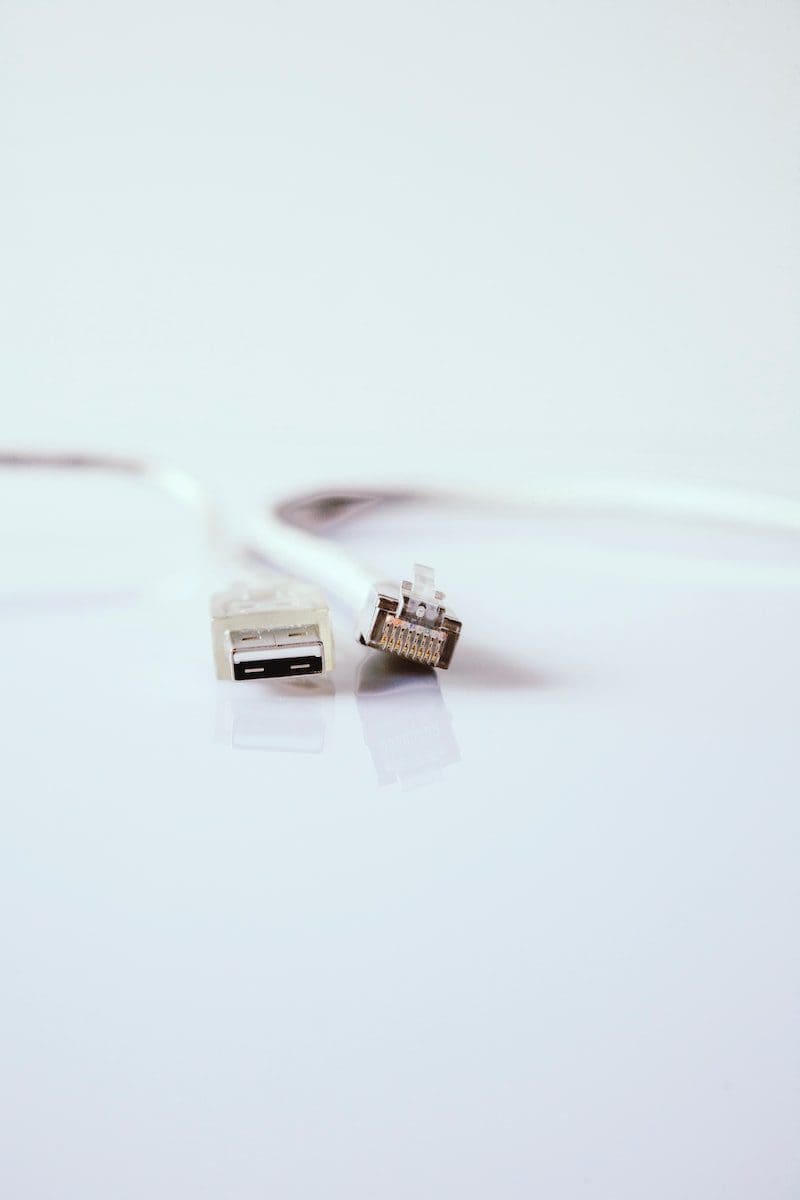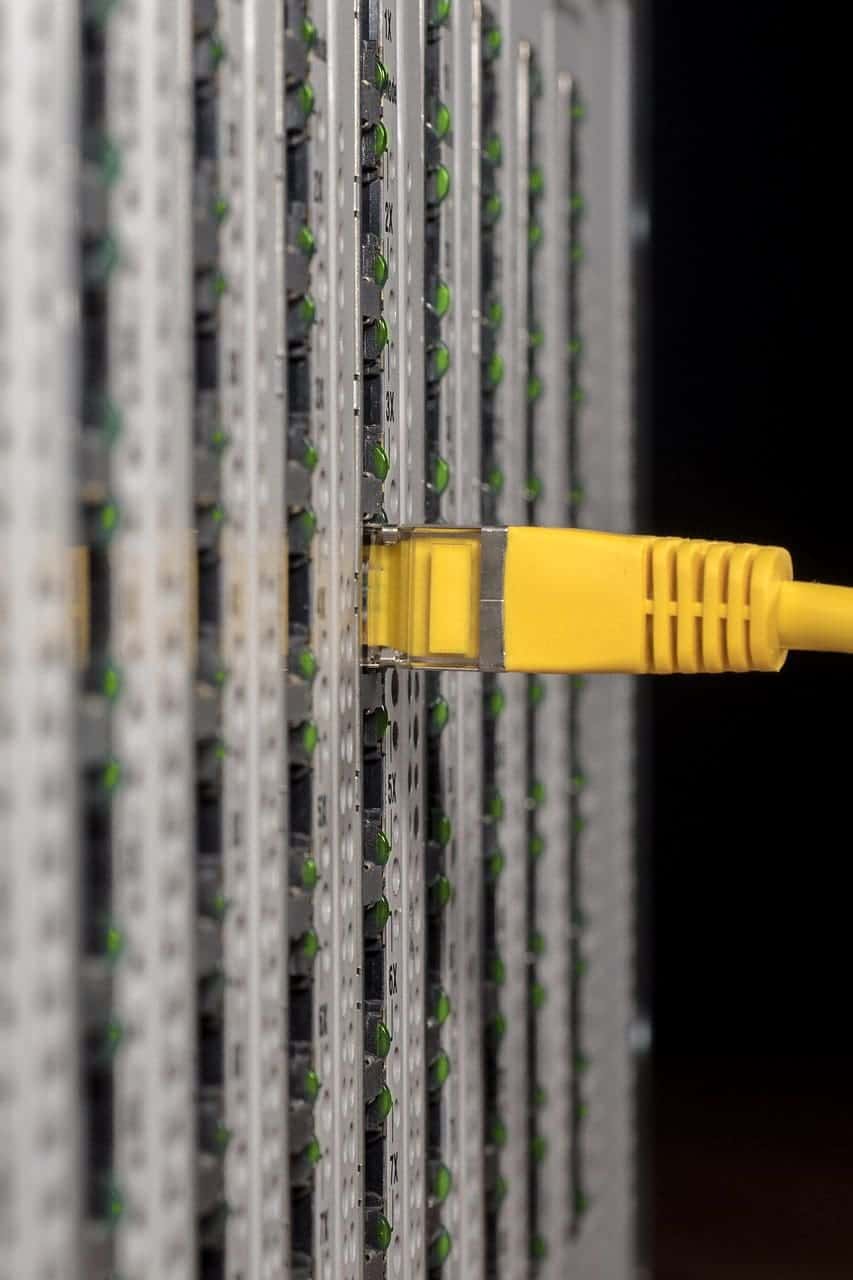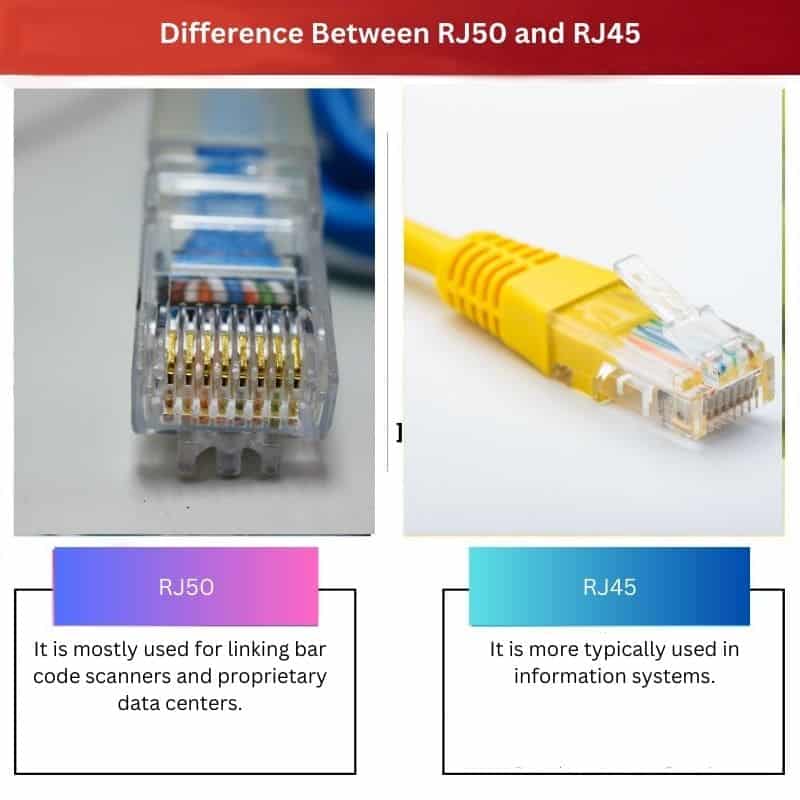Connectors are equipment that serves as linkages between power lines for devices like phones and computers and internet sources like modems and routers.
The RJ45 and RJ50 have a lot in common and are sometimes mistaken for one another. They are currently some of the best connectors in the industry. However, there are certain points of difference between them.
Key Takeaways
- RJ50 connectors have ten pins, while RJ45 connectors have eight, accommodating different cable types.
- RJ50 is used primarily for data and telecommunication applications requiring more conductors, while RJ45 is widely used for Ethernet and network connections.
- RJ50 connectors are less common and harder to find than RJ45 connectors, which are the standard for most networking applications.
RJ50 vs RJ45
RJ50 is a connector that has a configuration of 10P10C, which can use up to 10 wires simultaneously. It is used for linking barcode scanners and propriety data centres. RJ45 or registered jack 45 is large and bulky and used in Ethernet networks that have a configuration of 8P8C. It can support 10 GBPS speed over Ethernet networks.

The RJ50 connector is made of translucent hard plastic that allows the connections inside to be seen. It is similar to the Rj45 in that it is long and rectangular. It has a 10P10C layout, which means it has ten positions and ten connections.
It can handle up to ten cables at once. The transmission pins are made of copper and are gold-plated to prevent rust.
The RJ45 connector is composed of translucent hard plastic, which allows the linkages within the connector to be seen. It is rectangular and long in appearance. It is 11.69mm wide.
It features the 8P8C configuration, which means it has eight positions and eight connecting points. This cable is capable of transmitting data at speeds of up to 10Gbps.
Comparison Table
| Parameters of Comparison | RJ50 | RJ45 |
|---|---|---|
| Application | It is mostly used for linking bar code scanners and proprietary data centers. | It is more used in information systems. |
| Configuration | 10P10C. | 8P8C configuration which is 2 pins lesser than RJ50. |
| Cost | More expensive. | Less expensive. |
| Colour Code | White/Blue, Blue, White/Orange, Orange, White/Green, Green, White/Brown, Brown, White/Gray, or White/Black, Gray, or Black are the respective color codes for pins from 1 to 9. | White/Orange, Orange, White/Green, Blue, White/Blue, Green, White/Brown, Brown are the respective color codes for pins from 1 to 8. |
| More preferred | This connector is not considered as good as RJ45. | This connector is better as it can be used in a variety of things. |
What is RJ50?
This connector is composed of translucent hard plastic, which allows the connections inside to be seen. It has a 10P10C layout, which means it has ten positions and ten connections.
Bar code scanners and specialized data systems benefit the most from this connector. Electrical equipment such as data collection devices, certain kinds of test equipment, and most PC accessories can be linked using RJ50 10P10C cables, which is a plus point of this cable.
These amazing cables not only come in various configurations but also in a variety of lengths. The cables keep all the wires connected. Thus, it is very compact and has a less complicated look.
Even though it is not strictly correct, RJ50 cables are commonly referred to as “RJ45 10-pin” cables. The RJ45 (8P8C) linkages on these cables have eight pins.
On the other hand, the RJ50 (10P10C) connectors are the same physical size but have ten pins. Its configuration is more extensive than the Rj45. It is tough and long-lasting.
It has gold-coated copper pins to keep them from corrosion. It is, however, possible that it will be significantly more expensive than the Rj45. This cable comes with both male-to-male connections and male-to-female extension cables.

What is RJ45?
This connector is an eight-pin technical standard that is used to link computers to a local area network (LAN). Originally designed for telephone conversations, this connector is now utilized in a variety of applications. RJ45 is an acronym for Registered Jack-45.
This connector is composed of translucent hard plastic, which allows the connections within the connector to be seen.
It features the 8P8C configuration, which means it has eight positions and eight connecting points. It can simultaneously handle up to 8 wires, making it excellent for Ethernet cable connections.
It can not only handle UTP connectors but also accept STP cables. Copper pins serve as conductors in this connector. They are coated with gold since they are prone to corrosion. This cable also enhances the connector’s artistic appeal.
This connector is capable of transmitting data at speeds of up to 10Gbps. It can simultaneously handle up to 8 cables. It can also manage large amounts of data streaming.
With gold-plated copper pins, it is sturdy and long-lasting. However, one of its drawbacks is that it cannot support some telephone lines.
These connections feature eight separate pins and eight different colored wires. RJ45 is preferred as it has several uses in a variety of things. But the ultimate usefulness of the connector depends on the necessity of its user.

Main Differences Between RJ50 and RJ45
- An RJ50 connector is mostly used for linking bar code scanners and proprietary data centres, while an RJ45 is used more in information systems for data transfer by making a connection to Ethernet wires.
- RJ50 has a configuration of 10P10C. RJ45 has an 8P8C configuration, which is two pins less than RJ50.
- RJ50 is slightly more expensive than RJ45.
- White/Blue, Blue, White/Orange, Orange, White/Green, Green, White/Brown, Brown, White/Gray or White/Black, Gray or Black are the respective color codes for pins from 1 to 9 for an RJ50 connector. On the other hand, White/Orange, Orange, White/Green, Blue, White/Blue, Green, White/Brown, Brown are the respective color codes for pins from 1 to 8 for an RJ45 connector.
- Most might not consider RJ50 as good as RJ45. RJ45 is more preferred as it has several uses in a variety of things. But the ultimate usefulness of the connector depends on the necessity of its user.





